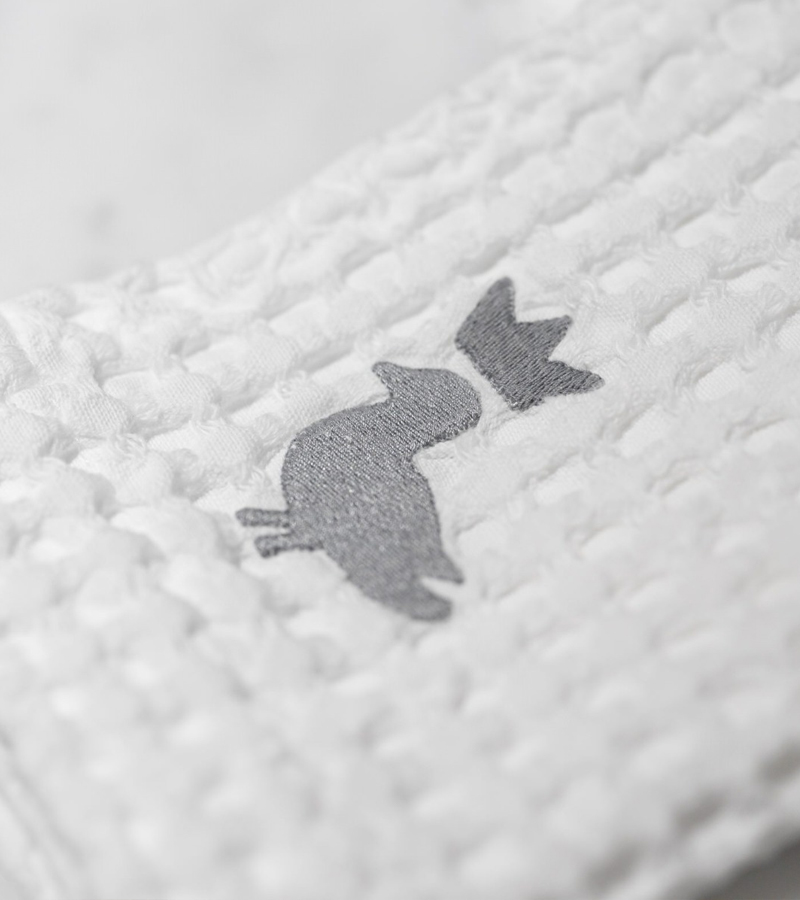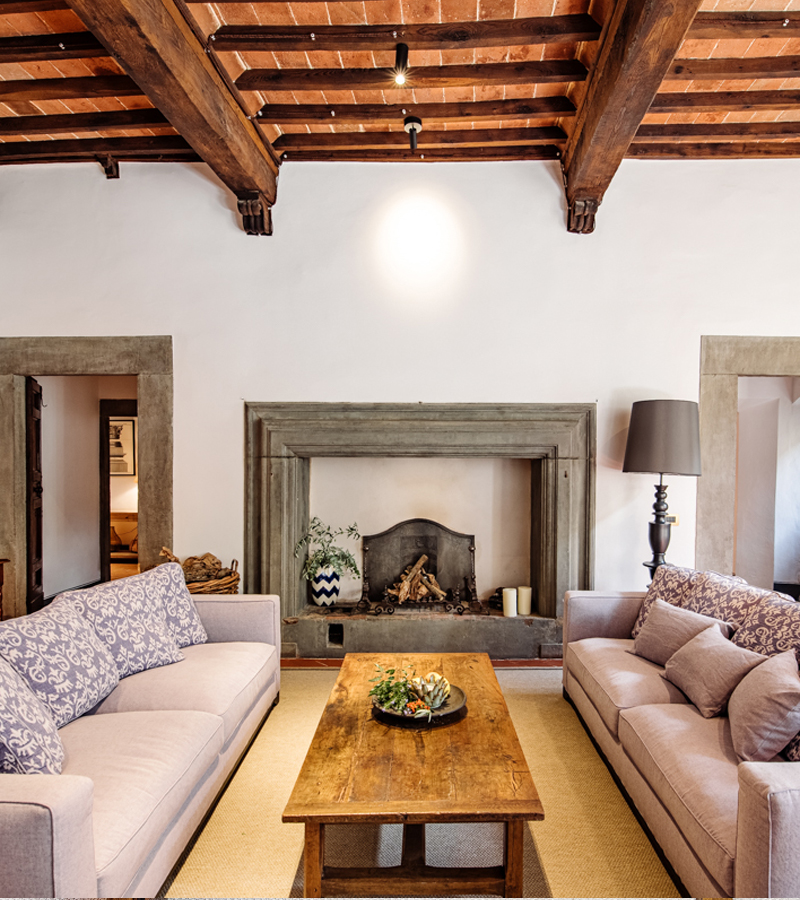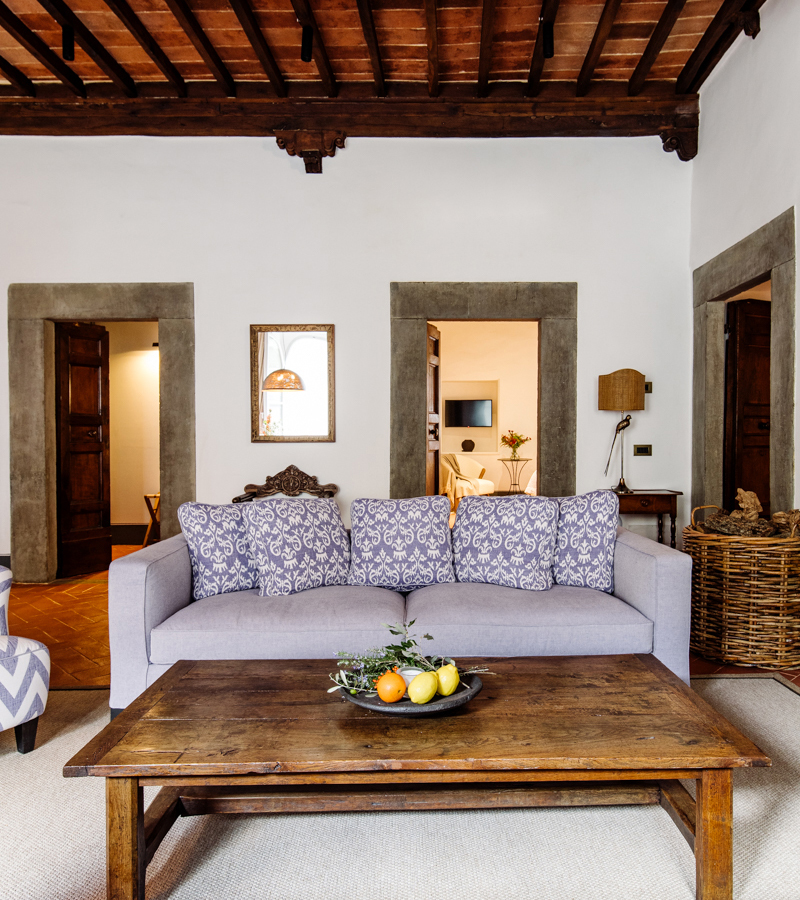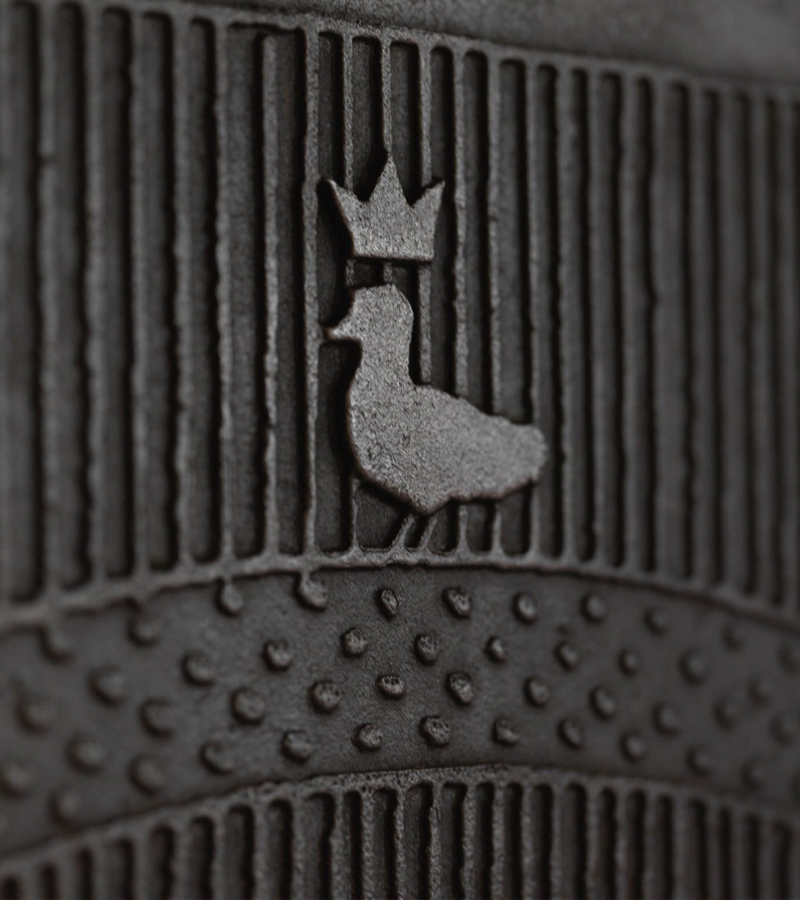
YOUR HOME
IN CORTONAWELCOME AND INTRODUCTION TO PALAZZO PASSERINI
Welcome to Palazzo Passerini, an air-conditioned luxury townhouse in Cortona, Tuscany. The perfect alternative to a boutique hotel in Tuscany. This is your home in Cortona for however long you choose to stay.
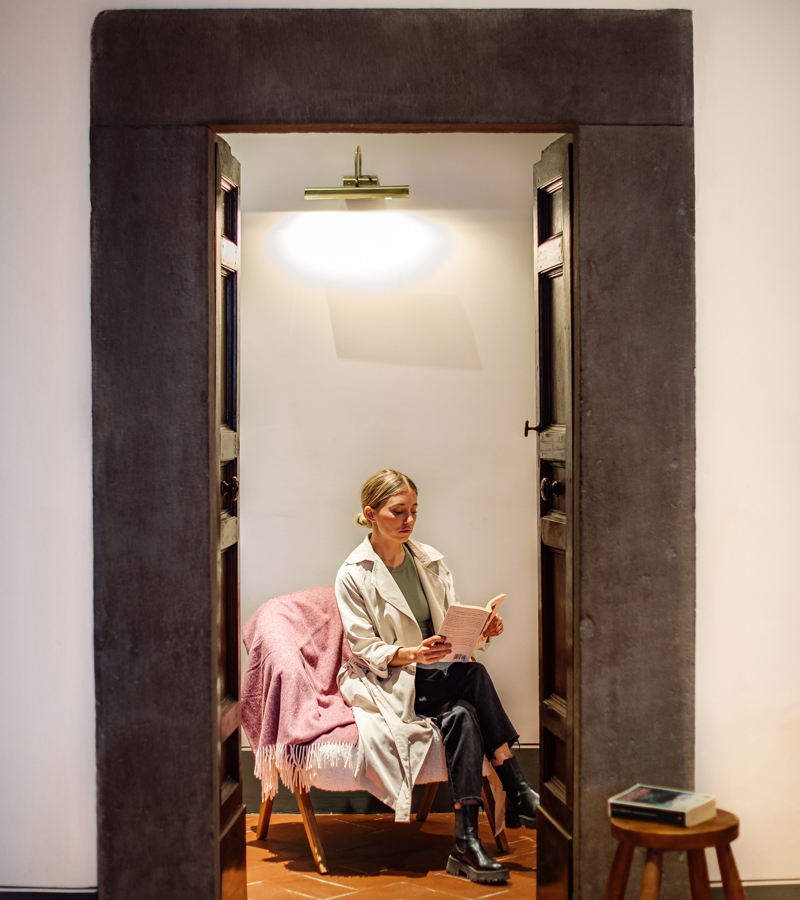
Luxury Hotels Tuscany
Palazzo Passerini was always conceived as the place in Cortona for the discerning traveller and not as a personal home. We have spent the best part of three years designing procuring and curating this experience for you. As Architects, we look at every detail, but as travellers, we understand how important the experience is.
Our highly experienced and talented team, from our marketing and media guru, Lulu, to house manager Marialena and her dedicated team of cleaners, handymen and artisans who maintain the property, are here to make your stay an experience you will never forget and want to return to.
Please tell us what you want from your stay at Palazzo Passerini. Our network and contacts mean we can arrange anything for you from hot air ballooning, private tours, wine tastings, shopping trips, truffle hunting, you name it we can do it! Marialena is here to help you and save you having to do the research, so please discuss your plans with her.
It may be peace and quiet you crave, although this lively medieval town offers a full calendar of events throughout the year that may entice you away from Palazzo Passerini from time to time.
Cortona and Palazzo Passerini Residenza (to give its full name) is a base for exploring the wider Tuscan and Umbrian countryside and some of the greatest cities of art and culture – Florence, Siena, Arezzo, Perugia, and Pisa to name a few. Go to Florence, Rome or Milan and return in a day, with fast trains connecting these cities from local stations in Camucia or Terontola (use the Frecciarossa- Red Arrow high-speed rail service).
Alternatively, you may want to explore on bicycles, visit vineyards, eat good food (of course) and drink great coffee in the Piazzas of Cortona, Gubbio, Assisi, Città di Castello, Sansepolcro or other famous Tuscan and Umbrian towns. Or walk or cycle in the staggeringly beautiful Niccone valley.
Cortona itself has a lot to offer, from great food and wine to culture and art. Visit one of our recommended restaurants or go to the market (on Saturday mornings) less than 200m from Palazzo Passerini and buy the ingredients to cook in the kitchen on our Italian Smeg range. Visit Santa Margherita at the top of the town or wander amongst the many art galleries. Play tennis at the amazingly located Cortona Tennis Club overlooking the Val di Chiana or walk along the avenue of trees in the Parterre to the swimming pool.
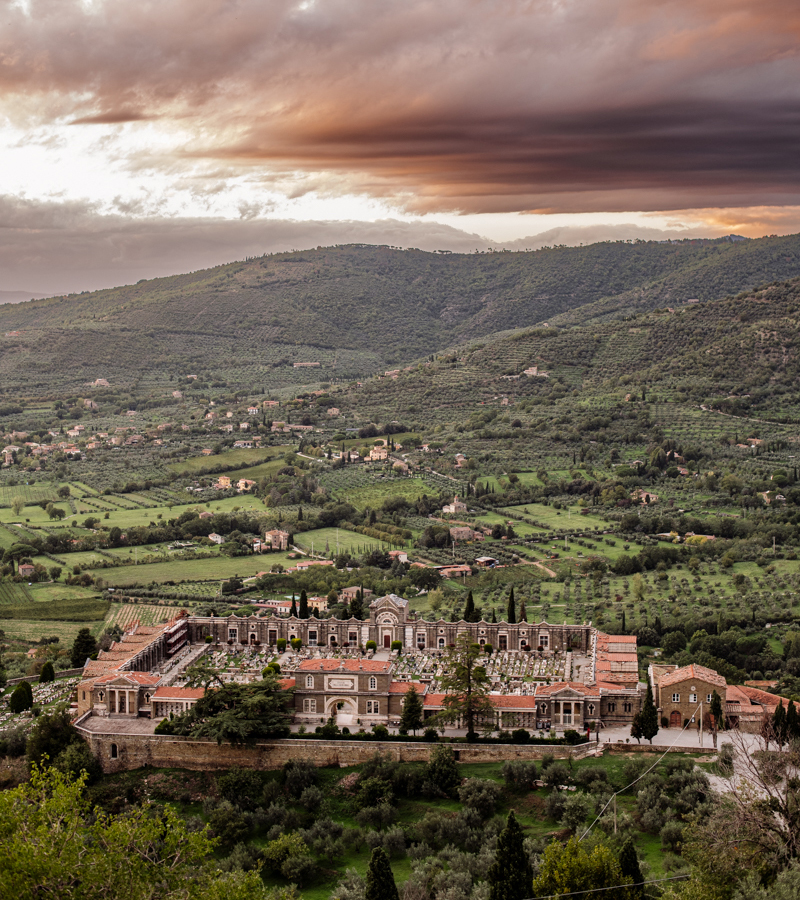
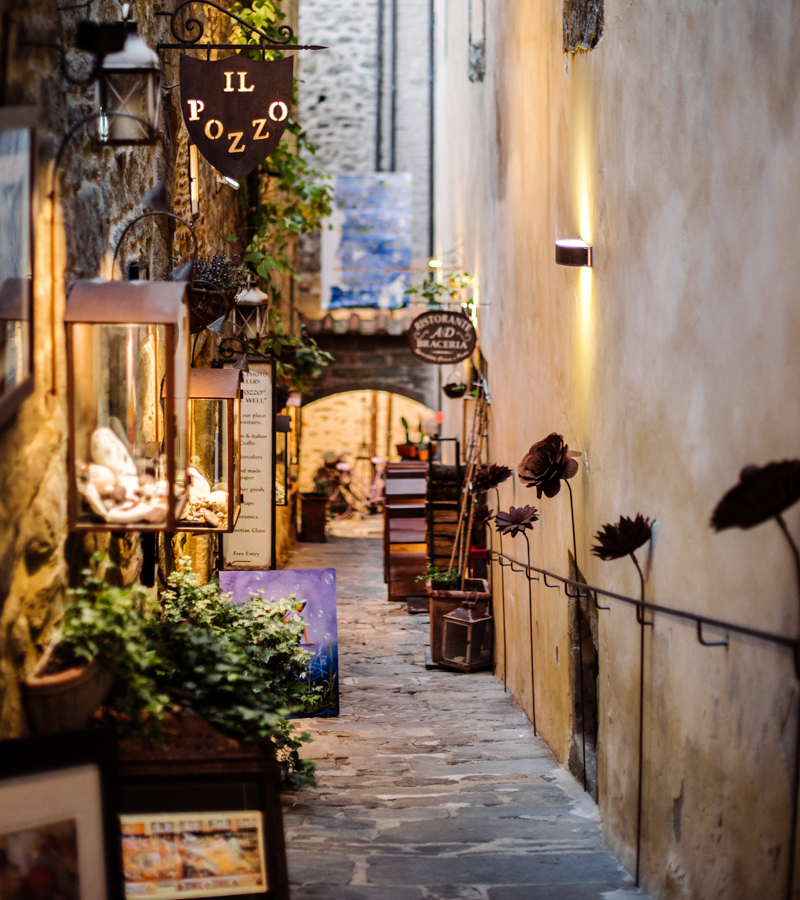
Looking for luxury hotels in Tuscany? Palazzo Passerini is ideal for small groups of 6, friends and family, to enjoy an authentic medieval Palazzo in one of Tuscany’s most beautiful medieval hill towns.
If it’s the countryside you want, just walk to the Etruscan walls (2-3,000 years old) of the city and look towards the Val di Chiana or North towards the Umbrian mountains. Walk out of the town (gate) to Le Celle di San Francesco dating back to 1221; the retreat of St Francis of Assisi to find peace in the Umbrian forests with its oak, chestnuts and beech trees and maybe see its famous cinghiale (wild boar) rummaging in the undergrowth. Beware at night though, that’s when the cinghiale do roam the roads around Cortona, and some of them are big!
Visit or sail on Lago Trasimeno, visible from Piazza Garibaldi, where Hannibal once defeated and slaughtered a Roman army of 26,000! Yes, these are the mountains of Hannibal on his elephants too!
The history of the town can best be conveyed at the City Museum in Piazza Signorelli, a good starting point if you have never been to Cortona before and just a few metres from Palazzo Passerini.
HISTORY OF PALAZZO PASSERINI
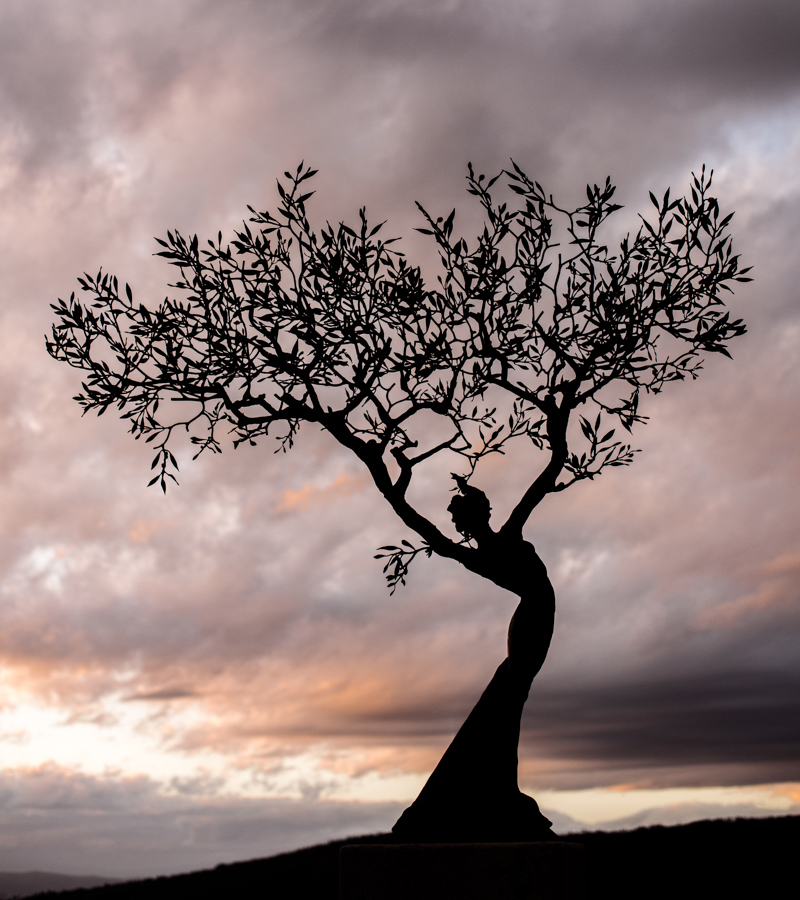
History is a funny thing! What can it tell us about the ambition and aspirations of a young nobleman by the name of Passerini? It was 1493 – Christopher Columbus had just discovered the new world whilst Leonardo da Vinci was inventing the helicopter or aerial screw and the Renaissance was gaining momentum with a new age of enlightened thinking as radical in its ways as the digital age of today.
At 24 years old Silvio Passerini (b. 1469) knew he could not stay in Cortona forever, but perhaps out of caution or frustration decided to build a Palazzo as a home base to retreat to in case things went badly. People and families could fall from favour very easily and feuding was a regular feature of the fiefdoms of Tuscany and Umbria.
Italy was a disunited group of states and would not be recognised in its current form until Garibaldi united the country under one flag in 1871. Re-enactment of conflicts of this period can be seen at the Joust of the Archduke held annually in Cortona.
The Palazzo was built between 1493 and 1495 just as Passerini’s connections in Florence with the powerful Medici family bore fruit. Accordingly, he then moved to Florence to cultivate his new friendships and gained favour in the court of Lorenzo di Medici, where he became very close to his son Giovanni. His position and power (and wealth) increased over the next 30 years in Florence until eventually, it was time to return to Cortona as Cardinal Passerini to govern the people of Cortona.
The people of Cortona welcomed their new mayor by presenting him with the building (Palazzo del Capitano del Popolo) that now overlooks the main Piazza Nazionale. This building was then renamed Palazzone Passerini as it is known to this today.
Confusing, perhaps, but the building you now stay in was the original built by Passerini himself. However, by 1521, this building had been superseded by events and the advance of the new Renaissance age, so styles had changed. Like something from your childhood you discard as a forgotten trinket, it was primarily overlooked but may have been occupied by other members of the Passerini family.
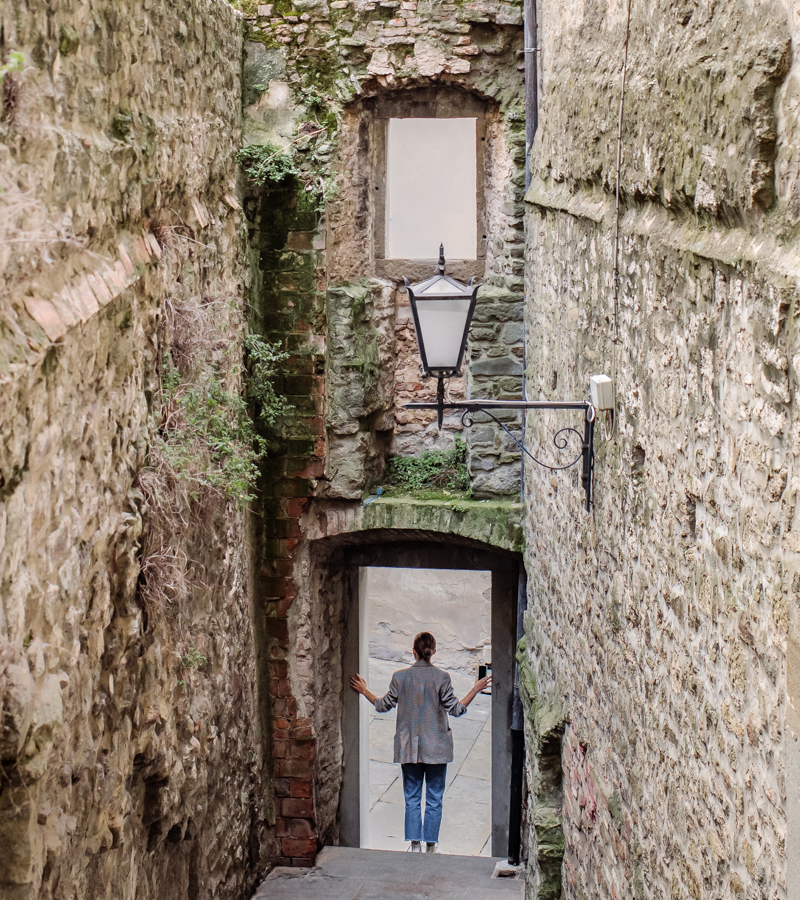
STEMMA (Crest)
The crest you see on the fireplace backplate and the crowned bird are the original crest of Passerini c 1495, but the later crests were much more ornate with a standing bull and a red cardinal’s hat adorned with flourishes and colour. Passerini now the Bishop-Cardinal of Cortona went on to build a much more grandiose Palazzo outside the walls of Cortona, which you see with its private chapel at the gate, as you approach Cortona from the South. So that’s the third Palazzo bearing his name!
However, and there is always a twist, it was said that Passerini was somewhat harsh in applying his rule and the taxes he extracted from the people of Cortona, who wrote to the Pope to report this information. The Pope was Lorenzo di Medici, who had now become Pope Leo X in Rome! He sent a special envoy to see Cardinal Passerini, who as punishment was directed to make the bull on his new crest kneel as a sign of humility. Maybe this light ‘punishment’ was in deference to their former friendship!
Not much is known about the ownership of the property since Passerini passed away in 1529, but it is assumed it remained in the family for several centuries. It survived two world wars largely unscathed, with liberation (a day celebrated annually in Cortona) being first declared by a British Gurkha regiment arriving, quickly followed by the Americans. Bullet holes fired by the fleeing Nazis can be seen around the front door (kept as a reminder).
The property fell into considerable disrepair in the late 20th century when it was virtually uninhabitable. Enter the great restoration carried out by the former owner Maria Giaquinto and her husband who bought the property in 2000. The fabric and structure of the building was restored, and some floors had to be replaced as well as a complete renovation of the roof and interiors.
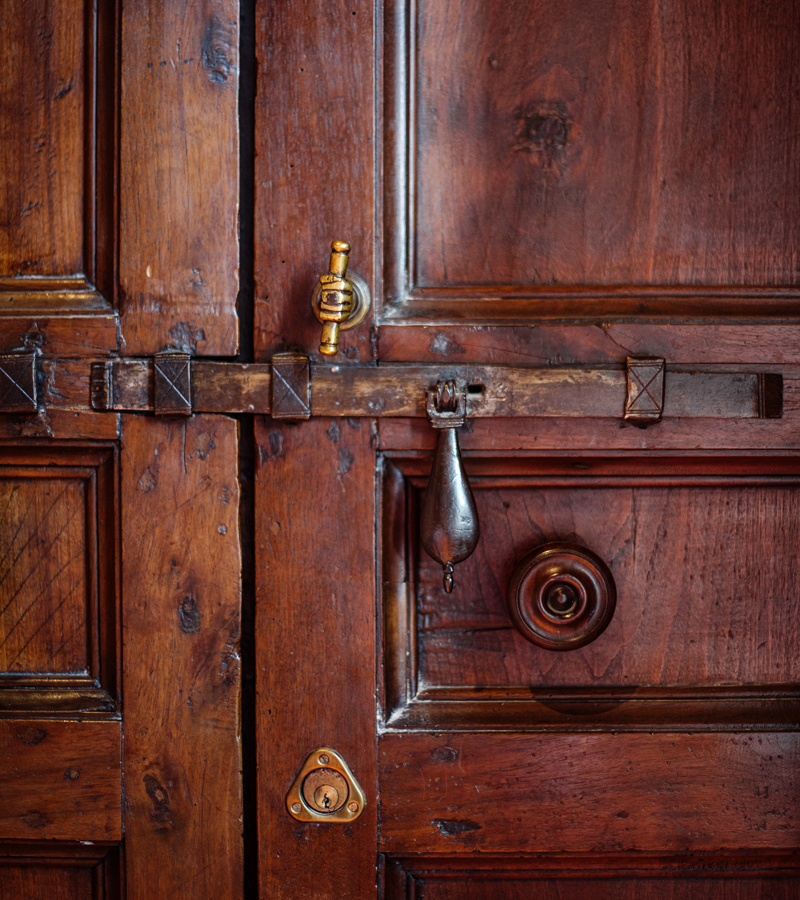
RENOVATION
Photos of Palazzo Passerini before the renovation into one of the luxury hotels in Tuscany.
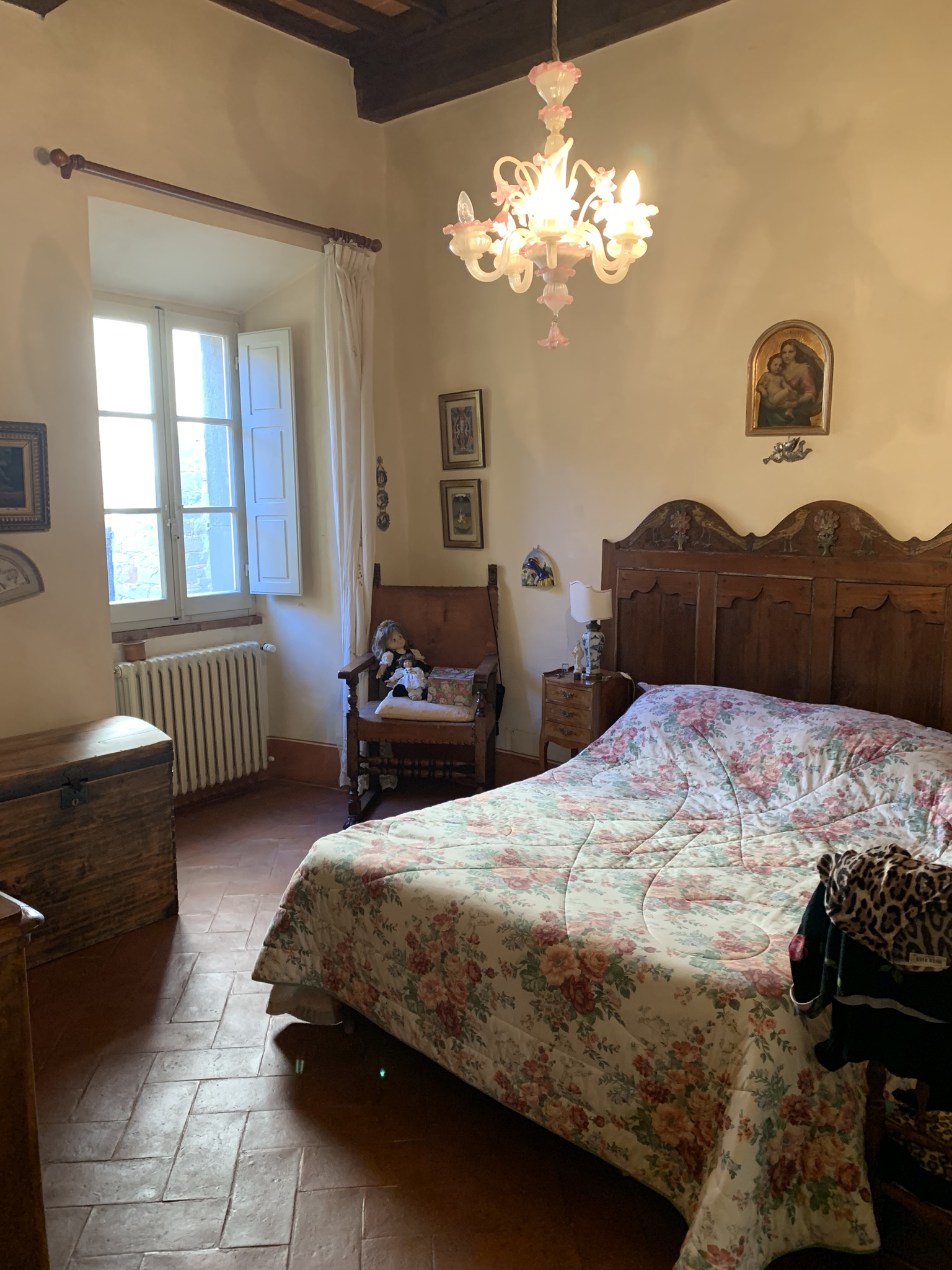
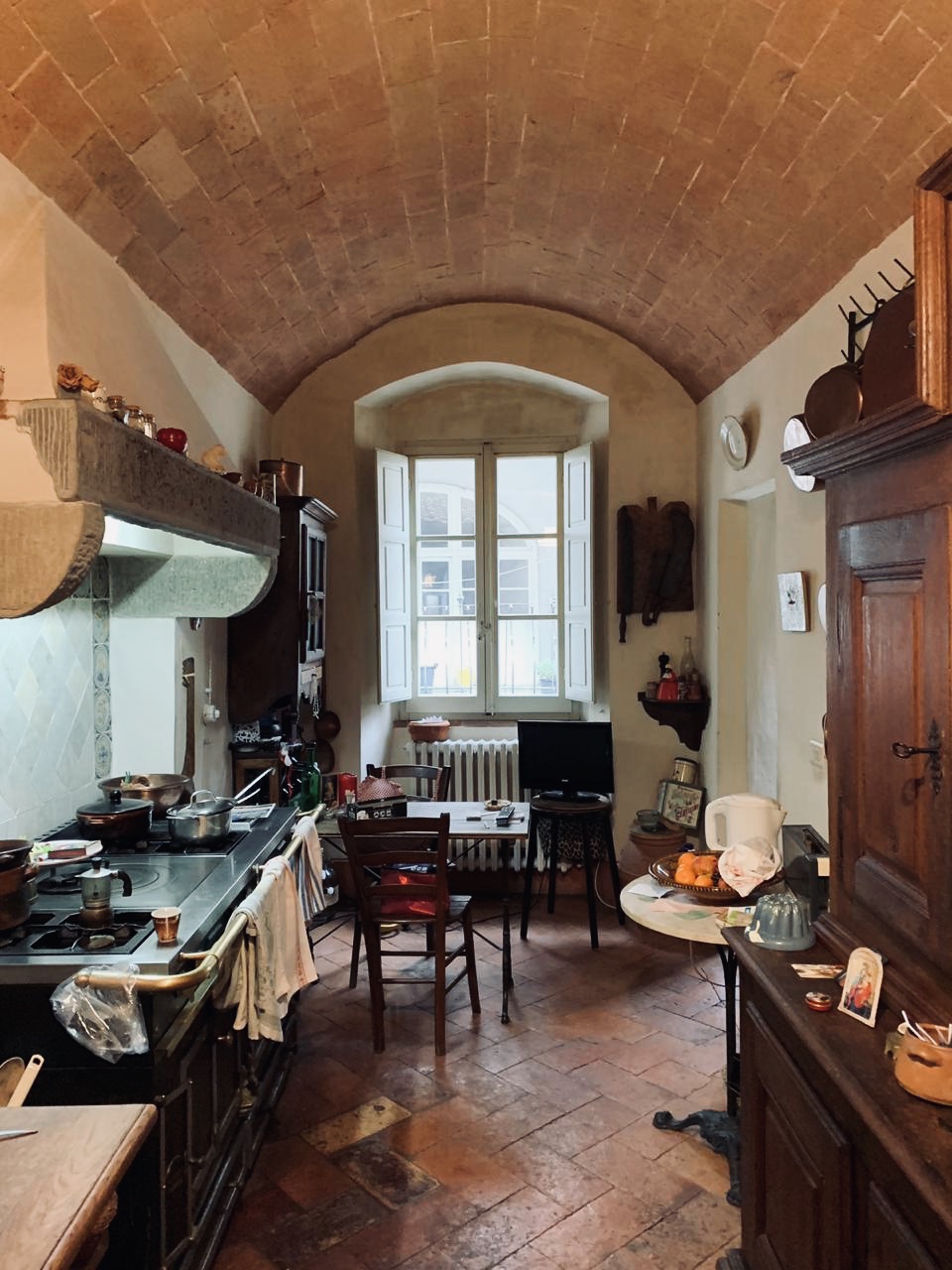


Charles Collett and Mark Farmer, Owners and Architects
We bought the property in March 2020. Both of us are Architects who have been visiting Umbria and Tuscany for 20 years.
So why Cortona and why Palazzo Passerini? We were introduced to Cortona through hotelier Sarah Townsend, who owned and operated boutique hotels in Cortona and Umbria before the term ‘boutique’ existed in hospitality.
During a visit to Sarah’s country house hotel in 2003, we sealed a lifelong friendship and an ambition to do something similar ‘one day’. So that day came when almost despairingly in 2019 looking all over Tuscany for the right place, we found Palazzo Passerini.
Sarah introduced us to local agent Lorenzo and as we walked with him through the Piazza, having seen another six properties that morning, Mark turned to Lorenzo in frustration and said ‘look, what we want is an authentic medieval hall with a big fireplace’ (as if it was not too much to ask!). Lorenzo in his calm and generous way then offered to call Maria, who was known to be thinking about selling but had not yet decided. A meeting was hastily arranged and before Mark had seen the whole property had whispered to Charles that ‘this was it’! We instinctively knew it was right.
Maria was persuaded and the sale was agreed upon in 2019 and almost a year later we took full ownership. A long design and renovation process was interrupted by the Covid pandemic and building work did not start until April 2021 following an extended design period with Sarah’s help and insight and interior design expertise.
What you see today is a contemporary interpretation of ‘medieval’ luxury. Not only have the services been wholly updated with high-speed internet and mobile booster but bathrooms and kitchens have been replaced or new ones installed. The aim has been to emphasise the handsome architecture of the interior whilst adding contemporary but comfortable furniture, working with local artisans and companies to feature the best Italian products.
Fabrics throughout the property are supplied by Busatti (founded in 1842) of Anghiari, just an hour’s drive from Cortona and well worth a visit. Curtains, linen and soft furnishings are all supplied by them and towels and bedding as well as dining chairs have the distinct bird and crown logo taken from the ‘Stemma’ woven onto the fabric.
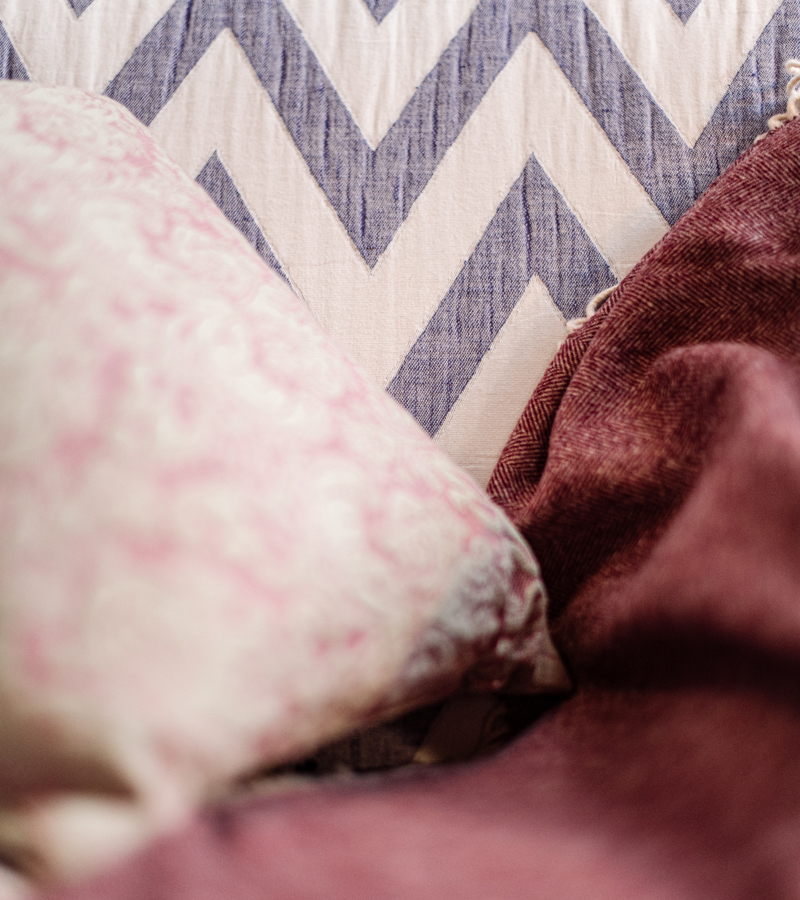
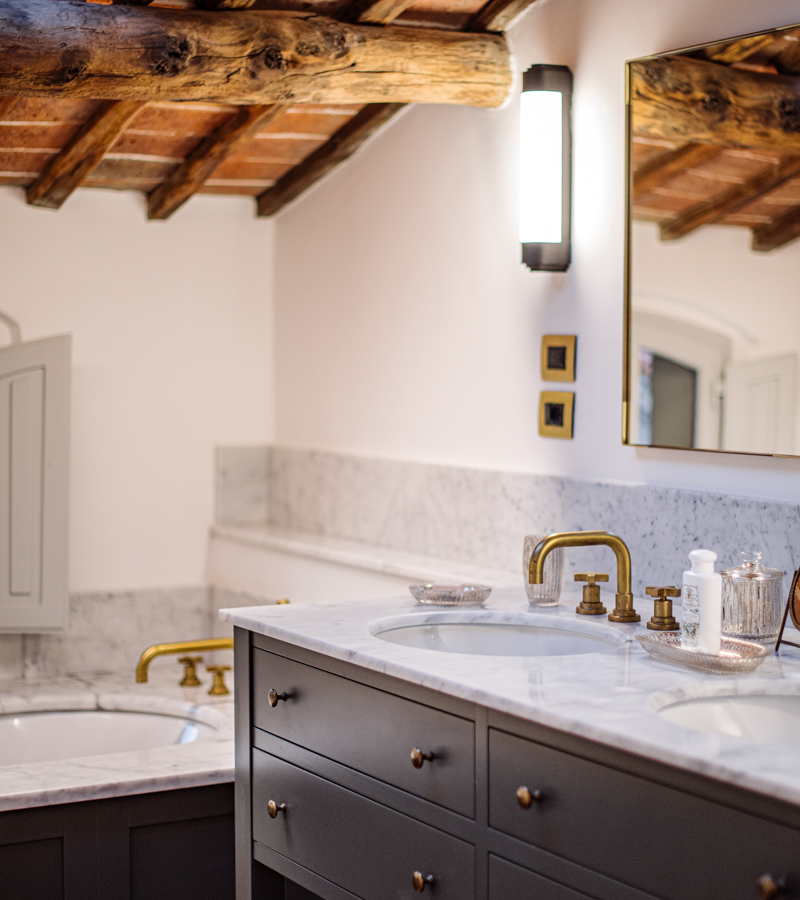
OUR PARTNERS
Tosconova, a Florence-based manufacturer of bespoke furniture, made all of the beds, sofas and chairs and use the Busatti fabrics to cover many pieces you see.
Craftsmen from Palazzo Morelli, a family-owned interior fit-out firm in Todi, with kitchen and bathroom cabinetry and marble work by them completed the interior. Stone and floor cleaning were also arranged using local experts to restore terracotta floors and the local pietra serena stone door and fireplace surrounds had to be carefully cleaned.
The brassware was supplied by Italian manufacturer Nicolazzi with a contemporary style in brushed brass as a natural finish; as the brassware ages, it will naturally gain a tarnish which is intentional.
Stone and specifically Carrara marble are used sparingly for kitchen surfaces and bathroom surrounds with basalt stone used for shower bases. The entrance area outside has been resurfaced with the traditional pietra serena (rigatto) for slip resistance and is commonly used in almost all Tuscan cities as paving.
Availability Request Form
Contact Us
Exquisite wines, the freshest ingredients, and service with a smile… the air, the views, the pastries…la dolce vita.. Tuscany is a place where life moves at a slower pace, where luxury is time.
EXPERIENCE THE
LUXURY OF AN
ITALIAN MEAL
AT ITS FINEST
Live like a local and head to Bar Signorelli in Piazza Signorelli for a traditional Italian breakfast of cornetto (croissant) with an espresso or cappuccino whilst enjoying the animated chatter of local Italians.
There are so many great restaurants in Cortona that you might find it challenging to choose between cooking in Palazzo Passerini’s bespoke kitchen and enjoying a plate of homemade pasta or perfectly cooked tagliata just a short stroll away. Palazzo Passerini is a perfect location for anyone looking for an authentic experience and a taste of Tuscany.
We’re happy to make reservations and recommend our favourite restaurants and bars.

